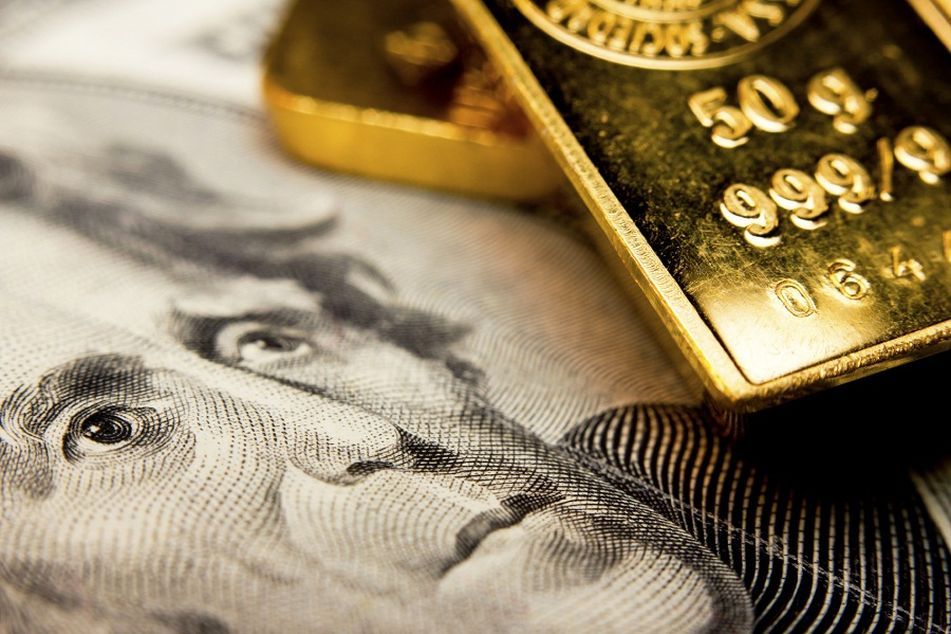As gold comes under attack, advisers show their mettle

Permanent allocations to the precious metal come under fire again as market slides, but advisers who believe in the asset are ready to double down.
Advisers who believe in long-term commitment to commodities, and especially to gold, are having their mettle tested.
The SPDR Gold Shares ETF (GLD) is off more than 16% over the last year, while the average gold and precious metals mining funds sank 46% over the year that ended Monday, according to Morningstar Inc.
Yet even as the metal’s golden sheen is starting to look a bit more like jaundice, financial advisers who believe in the asset are ready to double down.
Jeffrey C. Sica, who said he recommended clients trim gold exposures from as much as 20% in years past, is still keeping 2.5% of clients’ assets in the metal. And he said a further selloff would make the asset more appealing. He said gold remains what it has always been: an asset that doesn’t move in tandem with global stocks and bonds, and a “protest” against perceived currency manipulation.
“When you’re buying physical gold you’re essentially saying you don’t trust the currency,” said Mr. Sica, who is president and chief investment officer of Sica Wealth Management, based in Morristown, N.J. “What you’re going to find when this market implodes is people are in too-tightly correlated asset classes, and that’s going to be detrimental.”
TREPIDATIONS
For more skeptical advisers, the recent performance of gold has merely underscored previous trepidations about the asset’s role in investors’ portfolios. And it wasn’t hard to predict that gold might suffer, with the potential for a strong dollar and higher interest rates in the air. Many did.
Last year, for instance, a top Morgan Stanley analyst warned the firm’s financial advisers about gold’s dangers as a tool to combat stock volatility. As the note acknowledged, gold — which does not produce income and isn’t free to hold — is seen being costlier when risk-free assets throw off interest.
“Think about what a disaster it’s been for people that have substituted U.S. dollars for gold, not even for an investment but because they thought they were doing the safe thing,” said Joshua M. Brown, a New York-based financial adviser at Ritholtz Wealth Management and a prominent blogger.
In a recent post, Mr. Brown argued that gold is substantially less effective at mitigating inflation and equity risk than other assets.
There’s another side to that argument. In March, DoubleLine Capital’s Jeffrey Gundlach predicted gold would “make it up to $1,400 an ounce at some point this year.” He cited heightened buying by central banks. At the time, the metal was trading around $1,155. A widely traded futures contract for gold traded below $1,100 on Tuesday.
Nearly $60 billion is held in mutual funds that track just precious metals or the companies that mine them, according to Morningstar, but that number doesn’t include a range of broader funds that include gold exposure. It also doesn’t take physical delivery of gold into account.
GOLD BOOSTERS
Gold boosters advise a strategic allocation. A researcher at the World Gold Council, for instance, recommends about 5% for the average portfolio. He said the asset’s role in maintaining purchasing power is not well appreciated.
“Gold is a consumption asset, but it’s also an investment,” said Juan Carlos Artigas, director of investment research at the council, which is an industry group. He said the asset draws interest from investors seeking safe haven and industries, such as jewelers. “You have a part of demand that is pro-cyclical and counter-cyclical. You don’t find that very often in financial markets.”
But Mr. Sica, who advises his clients buy physical gold rather than funds, said China may be unwilling to maintain demand for gold. That decision will undermine some but not all of gold’s utility as a hedge, particularly if China’s markets and economy turn south and the country feels a need to increase its stimulus for other parts of its economy.
Mr. Sica said the Chinese government will be less likely to make large purchases of gold if it feels that money would be better spent propping up its domestic stocks. Central banks are a major source of demand for the world’s gold.
Learn more about reprints and licensing for this article.




